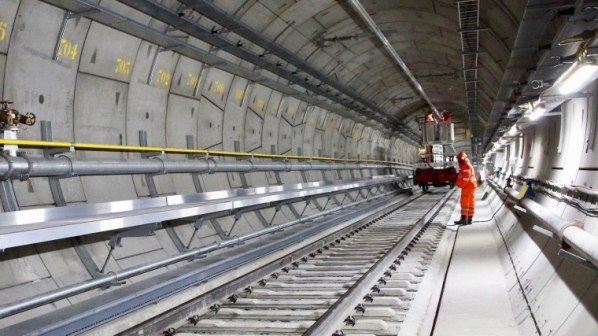Crossrail Ltd announced in August that the 21km central underground section of the new Elizabeth Line between Paddington, Stratford and Abbey Wood would cost an additional £450m to complete, and would not be ready to open until the first half of 2022.
TfL announced on December 1 that the shortfall will initially be covered by the Greater London Authority (GLA) borrowing up to £825m from the DfT. GLA will then give the funding to TfL as a grant, and will repay the TfL loan using Business Rate Supplement (BRS) and Mayoral Community Infrastructure Levy (MCIL) revenues.
The funding comes just over a week after London transport commissioner, Mr Andy Byford, wrote to the permanent secretary at the DfT seeking £80m of immediate support to keep the project on track.
“If agreement is not reached this week, we will have no option but to mothball the project and to seek alternative governance for its eventual completion,” Byford’s letter said, according to Sky news.
Crossrail Ltd says it is continuing to work hard to reduce its funding shortfall, and TfL is ensuring that further independent analysis of costs is carried out.
“I have been very clear that it is my priority to get the railway open as soon as possible and all those working on the Crossrail project are focused on that too,” Byford said following the announcement of the new funding. “Confirming this financing is an essential step in ensuring the team can fully concentrate on safely delivering the Elizabeth Line, which is so vital for boosting rail capacity and supporting the economy.”
“Delivery of the Elizabeth Line is now in its complex final stages,” says Crossrail Ltd chief executive, Mr Mark Wild. “Good progress continues to be made with completing the remaining infrastructure works so that we begin intensive operational testing, known as trial running, at the earliest opportunity in 2021. Many of the stations are now nearing completion and we will shortly commence an enabling phase for trial running which allows testing in the tunnels to be undertaken with an increased number of trains, further helping to build operational reliability. We are doing everything possible to deliver the Elizabeth line as safely and quickly as we can.”
“Securing this financing package enables us to press full steam ahead with getting the central section of the Elizabeth Line open as soon as possible,” Khan says. “The government have insisted London must pay the shortfall - despite the overwhelming majority of the tax income that will result from Crossrail going to the treasury.
“This is another example of London supporting the country way over and above the help we get from this government. I do not want this project to be stalled so it is vital that we dig deep to get the railway up and running. I will continue to monitor progress closely and do everything I can to minimise costs - helping ensure London and beyond can enjoy its many benefits sooner rather than later.”
Crossrail started a second blockade on November 21, which was due to run for 11 days, in order to get the railway ready for systems integration dynamic testing (SIDT) which is due to begin on December 3.
The blockade follows a successful six week blockade over the summer, during which 96% of the tasks scheduled during the closure were completed.
Governance of Crossrail transferred directly to TfL in October, in order to simplify responsibilities and ensure decision-making is seamless and fully aligned. A special purpose committee of the TfL Board, the Elizabeth Line Committee, is providing high-level oversight of the project, with the first meeting taking place last week.
The project remains a jointly sponsored by TfL and the DfT and an independent DfT representative will attend the committee meetings.
When fully open, the Elizabeth Line will have capacity for more than half a million passengers per day, and will support new journeys through central London out to Essex and Berkshire.
The new railway is expected to support thousands of new homes and new jobs and will boost the UK economy by £42bn.
For detailed data on rail projects from around the world, subscribe to IRJ Pro.

